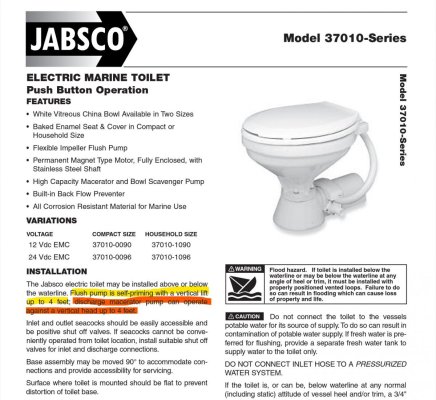Derik
Senior Member
- Joined
- Aug 21, 2018
- Messages
- 160
- Location
- United States
- Vessel Name
- Pearl Grace
- Vessel Make
- Marine Trader/Sun Deck 44
I just rebuilt my aft marine head, with a Jabsco kit. It works but not any better than it did previously but it is no longer leaking.
The freshwater tank it draws water from is too far down in the boat so it's pumping up about 3 ft. Pump pressure is low and it takes too long to get water in the head. I can't imagine it would ever fill the head enough to go number 2.
Has anyone ever put a booster pump in-line before the toilet pump? Seems pretty easy and I could easily wire it to the head switch to come on when I depress the head switch.
The freshwater tank it draws water from is too far down in the boat so it's pumping up about 3 ft. Pump pressure is low and it takes too long to get water in the head. I can't imagine it would ever fill the head enough to go number 2.
Has anyone ever put a booster pump in-line before the toilet pump? Seems pretty easy and I could easily wire it to the head switch to come on when I depress the head switch.

